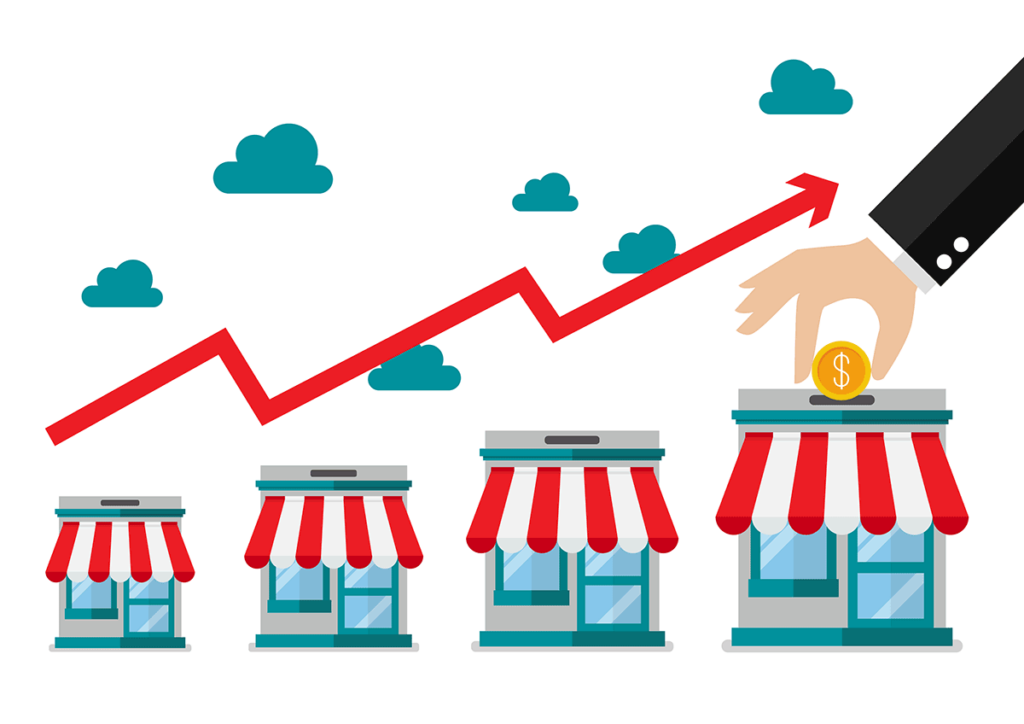Once your online business has been up and running for some time you can get trapped in the monotony of the day-to-day running of the business. In this article we aim to inspire you to take action with a few easy steps to grow and scale your ecommerce store.
1. Increase your website traffic
When business owners say to me that they aren’t happy with their sales, the first thing I ask about is their traffic. What has your traffic over the last three months been? Where is your biggest source of traffic? Which pages are receiving the highest traffic?
Online business owners need to know the answers to these questions if they want to increase their sales, because sales is largely driven by the amount of traffic you’re getting to your site. If you increase the traffic then you’ll increase your sales. Of course you need to get high quality traffic and you do this by attracting users to your site by two primary means: SEO and paid ads.
Paid traffic sources include Adwords, Facebook Ads, Google Shopping, Remarketing, Display Ads, etc. and this is a great way to proactively find your customers and show them your products. This method works but it requires budget so the downside of paid advertising is that when your budget runs out then the traffic stops. Because of this we recommend doing a combined approach of paid ads and SEO.
SEO (Search Engine Optimisation) is a long term game of creating content which ranks on Google and draws customers to your site for months and years into the future. Good SEO can be summed up in two concepts; relevance and authority.
The relevance of your content determines how and when it will show to users who are browsing the net. Well written relevant content will be full of keywords relating to your products and it will ideally be evergreen so that the content is still relevant into the future. The authority of your content and your website relates to how your site is ranked on Google. If you can create content which is shared and linked to from popular (high authoritative) websites in your market then this will increase the authority of your website. Building your website authority and constantly releasing relevant content is a great way to get up to the top of page 1 on Google and this will increase your sales.
2. Increase your conversion rate
The conversion rate of your website is the measurement of how many visitors to your site complete an order. SA’s average is lower than most people might think at around just 1.3% and this becomes a very important metric to monitor because if your website’s current conversion rate is sitting at 1% and you can increase that the 2% then you’ll double your sales from the same amount of traffic.
CRO (Conversion Rate Optimisation) is a never ending game of tweaking and fine tuning your website to see what works best but here’s some key areas to focus right now:
- Check the logic of your website navigation to ensure that users can find the product that they’re looking for in as few clicks as possible
- The checkout process must have zero distractions or pop ups
- Check that your Add To Cart button is an eye-catching colour
- Ensure that your site works 100% on a smartphone
- Set up abandoned cart recovery emails
- Put some budget into remarketing to bring users back to buy
3. Increase your average order value
Every time you’re in a queue at the shops you’ll see the sweets and magazines which are there to encourage impulse purchase and to increase the value of your order. If the store can, on average, get each customer to add R25 to each purchase then you can just imagine how much this adds to the company’s overall annual turnover.
If you’re not already doing this on your website then you can start today and you’ll see an overall increase in your sales. You can use plugins and apps which recommend up-sell and cross-sell products. You can structure bundle deals, offer buy-X-get-Y deals or you can offer a gift with purchase if they customer upgrades to the more expensive alternative.
If you offer free shipping on orders over R500 then you can prompt customers to add something to their cart when they’re buying something for R450. This works exceptionally well and helps to drive up the average order for your store.
4. Leverage marketplaces to grow your sales
Instead of seeing the big retailers as our biggest competition we can now start using them to our advantage. By listing and selling your product through marketplaces you can get massive exposure for your products to the millions of people that visit these sites regularly plus you can significantly grow your sales.
I know some entrepreneurs are hesitant to list their products on the big marketplaces because of the fees and because they don’t want to cannibalise sales through their own sites but the truth is that customers who buy from the big marketplaces probably wouldn’t have found your site so these sales that you get are sales that you wouldn’t have had otherwise. And, yes, they do take a fair chunk of the profits but again, these are sales you wouldn’t have had so I’ve always been happy to pay the fees. Of course, it is important to check that your margins allow for you to sell through the marketplaces and still make a profit at the end of the day.
To get more tips on how to increase your online sales and to learn more about ecommerce in South Africa click and join the Insaka ecommerce Community which is SA’s biggest community of ecommerce entrepreneurs.

Warrick Kernes is a serial entrepreneur with 12 years ecommerce experience in South Africa and Europe. Winner of London’s 2009 Young Businessman of the Year Award. Founder of the SA award winning online store Action Gear (founded 2010, exited 2018). Guest lecturer on ecommerce at WITS Business School to MBA students and he has also talked on ecommerce for JP Morgan (S&P 500). Warrick is a regular contributing author for Entrepreneur Magazine and in 2018 he published his book on South African ecommerce. He also sits on the Education Committee for the ecommerce Forum Africa. In 2017, Warrick founded the Insaka ecommerce Academy and is now dedicated to growing SA’s ecommerce industry.
To stay up to date with the latest PayFast news and updates, visit our website and follow us on Instagram, Twitter, LinkedIn or Facebook.



